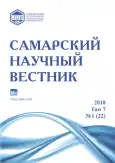Quest and case as elements of interactive technologies in modern biological education
- Authors: Sharypova N.V.1, Pavlova N.V.1
-
Affiliations:
- Shadrinsk State Pedagogical University
- Issue: Vol 7, No 1 (2018)
- Pages: 297-301
- Section: 13.00.00 – Pedagogical Sciences
- URL: https://journals.rcsi.science/2309-4370/article/view/25390
- DOI: https://doi.org/10.17816/snv201871314
- ID: 25390
Cite item
Full Text
Abstract
This paper considers interactive technologies of teaching Biology using quests and cases. The structure and components of the training quest are studied. The classification of quest types is given and the peculiarities of the method of linear, assault and ring quests are described on specific biological examples. The use of educational quests requires a lot of time, space and a bank of different non-standard tasks. Familiarizing students with a solution of real situations is possible with a case. The case study is a carefully selected theoretical material that should be as informative as possible, contain contradictory data, include different points of view, and consider topical problems of biology and ecology. Some types of cases are designed to teach students to analyze biological information, give it a certain assessment, expressing their attitude to it. Such work becomes creative and opens opportunities to exchange different points of view and find for truth. The authors note that the main purpose of these technologies is to actively develop the child’s cognitive sphere, as well as his or her motivational basis, personal qualities (communication skills, mobility, search for solutions, generate ideas and test them, etc.). The educational and educational potential of the quest is highlighted. The paper describes the experience of quests and case use in the educational process of Biology and Geography with the Methods of Teaching Department of Shadrinsk State Pedagogical University.
Keywords
Full Text
##article.viewOnOriginalSite##About the authors
Nadezhda Vladimirovna Sharypova
Shadrinsk State Pedagogical University
Email: sharnadvla@yandex.ru
candidate of biological sciences, head of Biology and Geography with Methods of Teaching Department
Russian Federation, Shadrinsk, Kurgan RegionNatalia Vladimirovna Pavlova
Shadrinsk State Pedagogical University
Author for correspondence.
Email: natasha-navlova@yandex.ru
senior lecturer of Biology and Geography with Methods of Teaching Department
Russian Federation, Shadrinsk, Kurgan RegionReferences
- Гузеев В.В. Планирование результатов образования и образовательная технология. М.: Народное образование, 2000. С. 206-207.
- Кичерова М.Н., Ефимова Г.З. Образовательные квесты как креативная педагогическая технология для студентов нового поколения // Мир науки. 2016. Т. 4, № 5. С. 28.
- Калугина Ю.В., Мустафина А.Р. Образовательный квест как интерактивная форма обучения иностранному языку // Научно-методический электронный журнал «Концепт». 2015. Т. 13. С. 3496-3500.
- Барнашева Д.Д., Павлова Н.В. Биологический квест как форма активизации учащихся при изучении биологии в школе: материалы всерос. студ. заоч. науч.-практ. конф. с междунар. участием «Студенческие исследования - 2017» / отв. ред.: О.А. Некрасова, И.В. Чуйкова. Сургут: РИО СурГПУ, 2017. С. 125-127.
- Виноградова А.О., Шарыпова Н.В. Химический квест как форма профориентационной работы со школьниками // Журнал «Международный журнал экспериментального образования». 2017. № 6 (приложение).
- Смолянинова О.Г. Дидактические возможности метода case-study в обучении студентов [Электронный ресурс] // http://ipps.sfu-kras.ru/sites/ipps.institute. sfu-kras.ru/files/publications/53.pdf.
- Смолянинова О.Г. Образовательный сайт по кейс методу обучения и методика его использования в учебном процессе КГУ [Электронный ресурс] // http://charko.narod.ru/tekst/an4/1.html.
- Федянин Н., Давиденко В. Чем «кейс» отличается от чемоданчика? // Обучение за рубежом. № 7. 2000. С. 52-55.
- Маргвелашвили Е. О месте «кейса» в российской бизнес-школе // Обучение за рубежом. № 10. 2000.
Supplementary files






